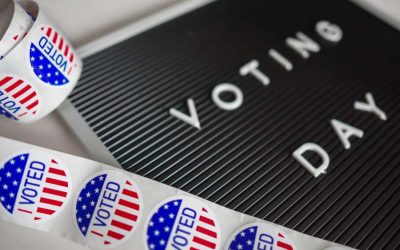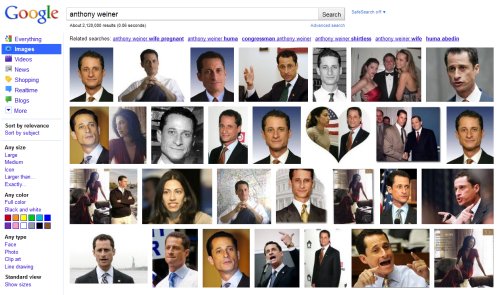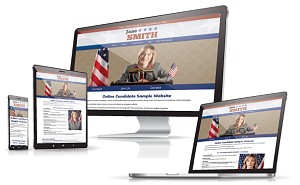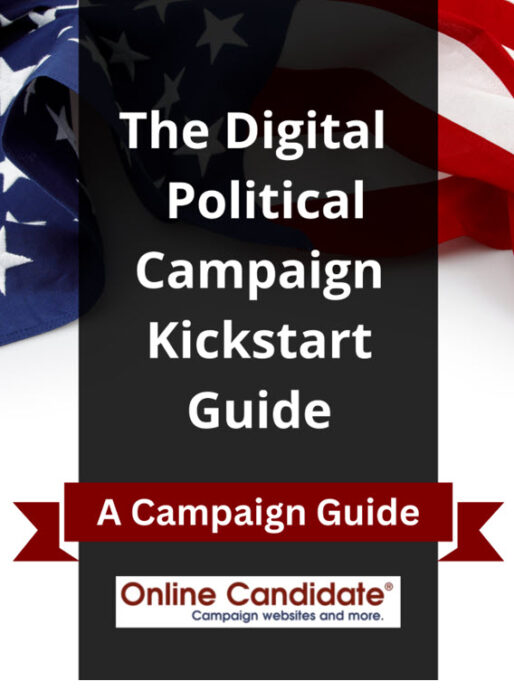Campaign Dollars and Sense
 Money fuels the engine of every political campaign. The bigger the budget, the easier it is to rally existing supporters and spread your message to new groups. Once you have inspired the masses, the last thing you want to do is create obstacles for them to donate.
Money fuels the engine of every political campaign. The bigger the budget, the easier it is to rally existing supporters and spread your message to new groups. Once you have inspired the masses, the last thing you want to do is create obstacles for them to donate.
THIS PAGE HAS BEEN 301 to https://www.onlinecandidate.com/articles/raising-online-dollars
Power to the People
Imagine for a moment giving a compelling speech to a cheering crowd. The supporters have embraced your platform, endorsed you as their candidate, and vowed to donate to the campaign. The same energetic crowd goes home, reaches for their wallets and heads to your website eager to donate…except they find the only way to donate is by check. Suddenly, their desire to give has met a roadblock. Never take away the ability of your supporters to decide which method of giving is right for them.
Checks in the Balance
Writing checks used to be the golden standard for payments. Now, debit and credit cards have steadily taken over as the preferred payment method. Analysis by The Campaign Finance Institute has shown the average online supporter gives less than $200 per donation, but is more likely to donate multiple times over the duration of the campaign!
According to Pew Research, a non-partisan research group, nearly 54% of all U.S. adults receive their information regarding the 2010 elections online. With that number of engaged potential donors, doesn’t it makes sense to have an online donation option for them?
Choose Wisely
There are many companies willing to help you with campaign donations; however, they are not created equal.
1. Use your donation tool to your advantage. There are flexible programs that allow you to not only accept donations on your website, but also provide a secure payment page to send out by email.
2. Compare programs. Many processors charge up to 10% in fees and surcharges, and some charge as little as 2.19%.
3. Deposit your funds automatically. To avoid interruption in your campaign cash flow, your donation processor should deposit funds directly into your bank account within 24-48 hours. Many processors only mail physical checks to the campaign office once or twice per month.
4. Beware of long-term contracts. Choose a provider that honors month-to-month agreements. Don’t make the mistake of getting locked into a long-term contract.
5. Remove the risk of handling credit card data. The safest way to handle a credit card transaction online is to allow a compliant and secure third party to handle it for you. This allows you to collect the money, but removes the risk of handling or storing credit card data.
Donations Made Easy
Increasing your campaign donations can be easier than you think. By empowering your supporters with an option to donate online, you give them the ability to give easily and often.
Amy Airhart is the Director of Business Development at LawPay, a credit card processing program specifically designed for attorneys and is recommended by more than 60 Bar Associations across the country.
Election Day – Now and Throughout the Year
For many candidates, Election Day is here. The general November elections always seem to get the most attention and greatest turnout. But other elections are also held throughout the year. There are school board, local elections and primaries.
For candidates that have elections that fall in ‘off’ months, voter turnout tends to be lower, so supporter turnout is the key to victory. Engaging voters early is particularly important.
By getting people excited and invested in your campaign, they are more likely to actually vote for you. People are busy. If they have followed your campaign, gotten to know and like you as a candidate, and perhaps even contributed, then the odds are greater that they will take the time to go to the polls on Election Day. By then, they have become psychologically invested in seeing you win.
If you have an election in the spring, late summer or even next November, start building support as early as possible. With online political activity growing each year, candidates of any type cannot ignore the web. Begin now to establish yourself online and create your online reputation. Start using social media and build out your campaign website. (We are seeing many candidates starting their websites a year or more before the election). These are the building blocks to online promotion and fundraising.
Done properly, you will build a strong following that will turn out and vote for you on Election Day – no matter when it occurs!
Running for local office or just considering a run? Check out OnlineCandidateResources.com. It covers everything from establishing yourself online though building a campaign site to online promotion and fundraising strategies leading up to Election Day. Free for Online Candidate clients.
Are Short Links Blocking Your Campaign Email?
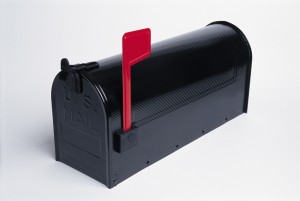 Link shortening services are a great way to reduce a long URL to a nice, short one. While these services have been around for quite a while, they’ve become very popular with the rise of Twitter and Facebook. While link shortening works well for social media posts, does it work well for email?
Link shortening services are a great way to reduce a long URL to a nice, short one. While these services have been around for quite a while, they’ve become very popular with the rise of Twitter and Facebook. While link shortening works well for social media posts, does it work well for email?
In a word, no.
While shortening links in emails (particularly text emails) is appealing, link shorteners are a favored tool by spammers. They like them because a shortened URL masks the true link that they want you to click on.
So how does this affect your email delivery? If a shortened link begins to appear in a large volume of spam, ISPs may block emails that include that particular link-shortening domain to block the spammers. If you are using the same link shortener in your emails, then your email messages may be inadvertently blocked, as well.
This can hurt your email deliverability rate.
Why take the risk? Send emails with an HTML version instead of plain text-only emails. With HTML email, you can easily link up text or images instead of putting the full URL in the message. (Most email marketing services primarily use HTML message builders.)
If you use a full URL, it’s probably better for your subscribers. After all, seeing exactly where a link points to is better than taking a risk clicking a shortened URL. Anything you can do to improve response on your email list is helpful, and using full links in your messages can improve your click-through rates. This can make a real difference in your fundraising and recruitment drives.
Link shorteners are great for social media, where space is at a premium. Just don’t use them in your email.
Hey! For less than the cost of a (print) mailing, you can easily build a political website for your campaign. Online Candidate sites feature a content management system, volunteer, and donation forms, social networking links, and more.
5 Common Campaign Twitter Mistakes
Political candidates and campaigns have several reasons for using X (formerly Twitter). They may want to build overall public exposure, establish branding, share information and increase voter support. While X/Twitter is simple to set up and use, it’s not without its quirks. To attract and keep more followers, avoid these common X/Twitter mistakes.
Mistweeting from the wrong account
Many people have multiple X/Twitter accounts. They may have a personal account and another for a political campaign. If you run multiple accounts, make sure you are logged into the proper account before you post! This mistake is more common than you may think, especially in the business world.
Confusing a direct message and a general tweet
Former New York Representative Anthony Weiner learned the hard way that there are big differences between a direct message and regular tweet when a lewd photo was posted to his campaign Twitter account. The scandal eventually led to his resignation. The lessons? Make sure you know who you are sending your messages to – and never assume that electronic communications will be kept private.
Being overly emotional
A little emotion in your posts is fine. After all, you don’t want to give the impression that you are a campaigning robot. On the other hand, too much complaining, vitriol, and anger can come across poorly. And keep your language clean, no matter what.
Letting the numbers fool you
The quality, not quantity, of your followers is important. You’re running to win an election, not a social media contest. Having 1.3 million X/Twitter followers doesn’t really matter if they are mostly fake. Honestly, do you think anyone actually compares the number of social media followers between campaigns and throws their support behind the more ‘popular’ candidate?
Being too ROI focused
Although marketing through social media is arguably measurable, it does not mean you should obsess over the traffic and repost metrics. The intangible benefits from relationships and message promotion are more important. (But for those who are interested, a few tools to help measure your social media ROI include X Analytics, TweetDeck, and third-party tools like Sprout Social.)
Online Candidate allows you to easily integrate social media into your campaign website. Start your campaign website today.
3 Essential Social Networks for Online Campaigning
 Though is still early summer, November elections will be here before you know it! As a political candidate, what are you doing right now to make the most of social media and get voters to support you in the voting booth?
Though is still early summer, November elections will be here before you know it! As a political candidate, what are you doing right now to make the most of social media and get voters to support you in the voting booth?
If you are going to do any online social networking, here are the three networks you should definitely use – and why.
With over 400 500 600 + million users, there’s a good chance some of your voters are on Facebook. Establishing a presence there is simple, and it’s easy to branch out and it connects well with other social networks.
Build a campaign Facebook Page to help spread the word. Once you do that, you can also:
- Post campaign updates, news, pictures and video to your Page.
- Create custom tabs for your page, including a custom landing page for non-Facebook users.
- Post Events and invite others.
- Use Facebook Plugins add additional page functionality.
- Add Facebook ‘Like’ Buttons to your web content so others can share and help spread the word on their walls and in their own news feeds.
- Use Facebook Ads to reach other users by age, location and other demographic information.
Who would have thought that online relationships could be developed within a 140-character limit? Twitter is more than just a micro-blogging tool. It is a way to connect and interact with others.
A few ways to interact, as opposed to just posting status updates, include:
- Asking questions about issues or news events.
- Re-tweeting other people’s tweets. Support other pols and have them support you!
- Using the #hashtag to get involved in conversations.
Tweets to promote your campaign are fine, but pure plugs should make up only a tiny fraction of your Twitter activity. Active engagement will get you more followers and more exposure.
LinkedIn (sort of )
With over 100 million professionals in the network, candidates cannot ignore LinkedIn. Create a professional profile to reach out to others and build your credibility.
LinkedIn is NOT a place to promote your campaign. That will constitute spam and will turn others off. It is a professional network, and you might want to get a feel for how it works before you jump right in.
LinkedIn allows you to:
- Create a personal profile.
- Attach your resume and describe your professional skills.
- Upload materials, such as SlideShare presentations and PDFs.
- Post reviews from others of your work.
- Highlight what others are saying or doing.
LinkedIn Groups provides a place for professionally-minded people with social influence to exchange ideas. Find a few groups on topics that you are passionate about and join the conversation.
LinkedIn Answers allows you opportunity to display your expertise to others. Good answers can earn you stars and enhance your overall status.
If you are going to go down the social network route, don’t wait! Building a successful network takes time and effort. (Months, really. We’re seeing some campaigns starting social networking efforts a year or more ahead of the elections.)
Who is going to influence the social media-savvy voter? The lonely candidate with 12 Facebook Fans and 3 Twitter followers, or the more popular candidate with hundreds of followers who is effectively engaging others online?
Tie your social network profiles to your Online Candidate website. Our easy to use system will help you create an online hub to build support, donations and votes.
What The Weiner Scandal Can Teach Us About Online Reputation
Many political candidates only start thinking about how they are portrayed online after they begin their run for office. What many fail to realize is that you (or others that share your name) already exist online. When voters type in your name into Google, what do they see?
And what will they see in search results during the run-up to Election Day? And what do you think people will see after a major scandal has rocked your political campaign?
 At the time of this writing, a controversy involving Anthony Weiner, a U.S. Representative for New York’s 9th congressional district, has entered it’s second week. We won’t rehash the issue here, but we are using his situation as an example of what can happen to someone’s search results following a political scandal.
At the time of this writing, a controversy involving Anthony Weiner, a U.S. Representative for New York’s 9th congressional district, has entered it’s second week. We won’t rehash the issue here, but we are using his situation as an example of what can happen to someone’s search results following a political scandal.
As we take a look at search results for the name ‘Anthony Weiner’, keep in mind he has a long political career behind him and during that time has been featured in the media quite often. Also, keep in mind that adding any other terms to this search would have provided very different results. For this example, we’re just sticking with his name.
The pink areas represent areas in the first page Google results that would be considered ‘negative’.
Okay, let’s break this down.
The News results appear on top of the general search results. There isn’t much anyone can do to control that. That section is comprised of larger news sources. If you are in a smaller campaign with less coverage, it’s possible that there would not even a News block.
Next is Wikipedia. This article is already updated with the latest on the scandal. Wikipedia is edited by others. There isn’t much a candidate can do about their listing. If a candidate or a staffer tries to repeatedly edit an article, that can lead to more trouble.
The next few listings are neutral/positive or are controlled by Weiner. There are two videos, two websites and a Twitter account listing controlled by Weiner. If he updates the two sites or the Twitter account, it’s possible they may move up a notch. The only reason those listings are still in the top ten are because the items have been around for a while and probably have a large number of links to them.
Rounding out the top ten is a TMZ post, a Buzzfeed page and a Politico article. TMZ and Politico are authoritative websites whose articles tend to rank well, so no surprise there. I suspect the Buzzfeed page might have helped break the scandal and built up a large number of backlinks early on. Otherwise, I don’t know why it’s in there over another similar page.
Finally, there are the related searches. Most of them are actually related to his legislative record. If he did not have that record, there’s a good chance the related search topics would be quite different.
Managing Disaster
All in all, it could have been much worse for Weiner. His online history helped prevent a complete meltdown of his search results. Even an image search on his name was not as bad as it could have been.
And that was with SafeSeach OFF!
As of this writing, it does not look like Rep. Weiner has done much to combat this negative material. Press releases or even acknowledgement of the scandal on his websites would probably have ranked well. Additional material, potentially controlled by Weiner, could have presented a more flattering view of the situation or at least help present his side of the controversy.
The Takeaway
Your online political campaign begins today. Building your online reputation takes time and some effort. This can mean creating personal LinkedIn and Naymes profiles, building a network of future supporters on Facebook and even starting a political website. Linking those online entities to each other helps build relevance for name searches.
During a campaign, you can be sure that unflattering things about you will appear online. It can come from your opponent’s campaign website, a newspaper article, a local blogger or even a negative comment on a discussion board. Your goal as a candidate to keep that material from appearing or pushing it down as best you can when voters search for you. To do that requires monitoring and proactively putting out your own content.
Considering Rep. Weiner’s problems, he’s pretty lucky to still have the search results he has for his own name. Without addressing the problem, it’s hard to say what his search results will be a few months from now.
Running For Office as an Online Candidate explores strategies in developing and promoting your campaign online. Download a sample or get the full version today.

